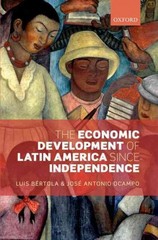Please download the attachments below in order to answer the questions. Kindly address all questions.
(a) In a perfectly competitive market, a firm's average revenue and cost functions are given as follows: AR = a Q-B where a, S are constants and Q is the output AC = a - B AR is the average revenue and AC is the average cost. Q on the basis of the functions given above, determine: Total revenue function. (2 marks) 300 Total cost function. (2 marks) Total break-even output level. (2 marks)(ii) Write down a formula for q, in terms of ,p, and the appropriate force(s) of mortality. (Note that q, = 197 .) [2] (Hii) By reference to the expressions obtained in (1) and (ii) above, explain briefly why qr is often referred to as a dependent rate of mortality. [2] (iv) Assuming that the force of mortality from each cause i is a constant of between integer ages x and x + 1, show that: Xqx where 4x =1- Px [5] i=I (Note that Px = \\Px.) [Total 14]An investigator wishes to construct a multiple decrement model of the mortality of a population, subdivided by the following causes of death. Cause 1: Cancer Cause 2: Heart disease Cause 3: All other causes You are given the following definitions: Ar is the force of mortality due to cause i (i = 1, 2, 3 ) at exact age x w/qx is the probability that a life at exact age x dies due to cause / (i = 1, 2, 3 ) before reaching exact age x + u (# 20) " Px is the probability that a life aged exactly x is still alive at exact age x + u (u > 0) You may assume that 1 19x - was 1-0. (i) Derive an expression for , p, ( 2 0), in terms of the forces of mortality, using only the above functions in your derivation. [5]Craig, aged 40, buys a four-year unit-linked endowment policy under which level annual premiums of $1,000 are payable. 75% of the first premium and 105% of each subsequent premium is invested in units. There is a bid/offer spread in unit values, the bid price being 95% of the offer price. A fund management charge of 0.75% of the value of the policyholder's fund is deducted at the end of each policy year. The death benefit, which is payable at the end of the year of death, is $3,000 or the bid value of the units if greater. The maturity value is equal to the bid value of the units. The insurance company incurs expenses of $150 at the start of the first year, $75 at the start of the second year, and $25 at the start of each of the third and fourth years. The rate of mortality is assumed to be 0.01 at each age and withdrawals may be ignored. (i) Assuming that the growth in the unit value is 5% pa and that the insurance company holds unit reserves equal to the value of units and zero non-unit reserves, calculate the profit emerging in each policy year. [10] (ii) Calculate the revised profit emerging each year assuming that the office sets up non-unit reserves to ensure that the profit emerging in the second and subsequent policy years is non-negative. Non-unit reserves are assumed to earn interest at 5% pa. [9] [Total 19]










